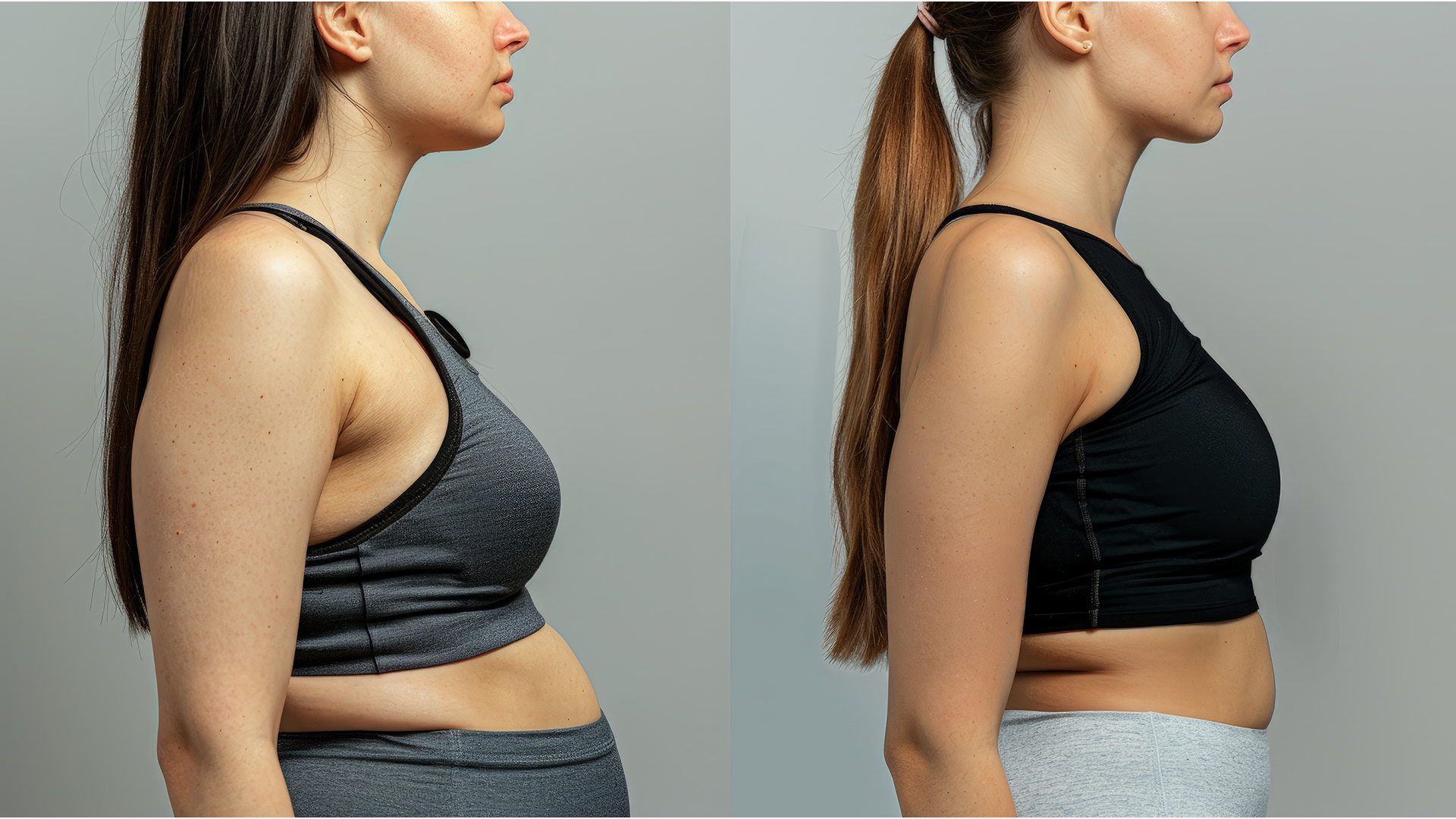Dieting can be confusing. Should you eat this? Should you avoid that? Many of us just want to know up front – how many calories should I eat to lose weight? Here’s a 3-step process to help you calculate exactly that.
What is the Average Daily Calorie Requirement for an Adult?
The typical adult usually needs about 2,000 calories each day to maintain their current weight and support essential body functions. However, this number isn't a one-size-fits-all and varies based on several factors:
-
Activity Level: If you lead an active lifestyle, such as exercising frequently or having a physically demanding job, you may require more than the standard 2,000 calories to sustain your energy levels.
-
Health Conditions: Those dealing with certain health issues, whether illness-related or linked to being overweight, might need fewer calories than the average to begin with, as their bodies process energy differently.
-
Age and Metabolism: Younger individuals and those with faster metabolisms often burn calories at a higher rate and may need a higher intake to fuel their bodies effectively.
To personalize your calorie intake, consider your specific lifestyle and consult with a healthcare professional or a registered dietitian. They can provide guidance tailored to your unique health needs and goals.
Why count calories?
Reducing your daily calories can be a very effective way to lose weight, but it needs to be a calculated cut if you want to enjoy long-term success.
A calorie (cal) is a unit that measures the energy stored in food. Our body uses calories from food and beverages to fuel our essential life functions. Everything from blood circulation to kidney function and even physical activity relies on it.
We need a specific number of calories each day to maintain our bodily processes and activities. If you regularly consume more calories than your body needs, it converts them into stored energy. Basically, excess calories turn into body fat. If you eat fewer calories, however, your body can re-convert fat and use it as fuel – hence the term ‘fat burn’.
But simply cutting a random number of calories won’t always result in weight loss. If you cut too many you may stress the body with nutrient deprivation, and if you don’t cut enough, you’ll just maintain your current weight.
Understanding your specific caloric needs is a key part of successful and healthy weight loss.
Step 1: Calculate your basal metabolic rate
To start your calorie calculations for weight loss, you need to know your Basal Metabolic Rate (BMR). This is the base amount of calories needed to maintain your daily vital functions. We often forget our body is working hard outside of the gym in tasks we take for granted such as breathing, tissue repair and more.
Your BMR accounts for ⅔ of your total daily calories and is directly affected by your current body mass, hence a 200 lb person requires more energy to fuel their body’s system than someone who is 140lb.
Calculate your BMR
Simply enter your sex, age, weight, and height in the calculator below to generate your BMR. Keep this number handy for the next step.
Not eating enough calories
You could be sabotaging your weight loss efforts if you’re eating fewer calories than your BMR. Eating below your BMR puts your body into a starvation mode. Although this can result in weight loss in the beginning, it can also negatively impact your body in the long term. In response to the starvation stress, your body slows your digestion and energy conversion. As a result, your weight loss will begin to slow down.
Eating less or burning more calories will help you to manage your weight, but you need to calculate your total daily caloric expenditure before you start cutting calories.
Why a crash diet is not a good option to lose weight >>
Step 2: Calculate your total daily caloric expenditure

This is the number of calories you burn each day with exercise and normal activities. If you sit for long periods of time your total daily calorie expenditure (TDCE) will be less than someone who stands all day.
Step 3: Calculate your deficiency
Your next step is to calculate how many calories you’ll intentionally cut out each day. If you eat your TDCE calories, you’ll maintain your weight and if you eat more you’ll gain weight. Planning a small calorie deficiency allows your body to start ‘burning fat’.
Calories to lose weight formula
Use the following formula to work out how many calories you need to consume in order to lose weight:
TDCE – 500 = calories to lose weight each day
Caution
The goal is to eat less, but not to stress the body into starvation mode. This can be accomplished by ensuring that you don’t drop more than 500 calories below your TDCE. For example, if your TDCE is 2,000 calories per day, you should eat at least 1,500 calories per day.
Furthermore, women should not drop their daily calories below 1,200, nor men below 1,500. This type of excessive calorie restriction limits your nutrients and can deprive your body of the energy, vitamins, minerals, and elements it needs to thrive.
Reassess your TDCE
You’ll need to reassess how many calories you need to be consuming to lose weight both when you change your exercise routine and after you lose 10 lb – 20 lbs. The longer or harder your workout routine, the more calories you burn in your TDCE. The more weight you lose, the fewer calories you burn in your BMR.
Weight loss plateau
A weight loss plateau is a good reminder to recheck your TDCE and BMR. You’ll need to reduce your calories slowly as you lose weight. Remember not to drop below 1,200 calories per day for women and 1,500 calories for men.
Ketone check
Checking for ketones in your urine can also help you determine whether your calorie and exercise plan are still effective in helping you to burn fat. When the body converts fat into usable energy, it creates a byproduct called ‘ketone bodies’.
These are passed out of the body in urine and you can monitor them with a ketone urine strip. You can find these over the counter at most local drug stores.
The quality of your calories
The quality of your calories matters just as much as the quantity. It’ll be hard to lose weight if your total daily calories are being filled with high levels of sugar, refined grains, and saturated fat.
Eating a balance of whole grains, vegetables, fresh fruit, lean proteins, and legumes will provide great energy for your workouts and help you to feel full while you’re cutting calories.
Apps
You can make tracking your total daily calories and nutrients easier with apps like Myfitnesspal or Lose it.
What is Macro Counting and How Does It Differ from Traditional Calorie Counting?
Understanding Macro Counting
Macro counting is a nutritional approach that involves tracking the grams of macronutrients—proteins, fats, and carbohydrates—you consume daily. This method focuses on the sources of your calories rather than just the total calorie count itself.
The Science Behind It
- Proteins, Fats, and Carbs: Each macronutrient plays a different role in your body. Proteins are crucial for muscle repair, fats provide energy and support cell growth, and carbohydrates fuel your daily activities.
- Quality over Quantity: By balancing these macronutrients, you can optimize how your body uses the energy from food, promoting better health and weight management.
Macro Counting vs Traditional Calorie Counting
While traditional calorie counting involves keeping a tally of all the calories you consume, macro counting digs deeper into where those calories originate.
-
Traditional Calorie Counting: This method focuses solely on the number of calories consumed, often without considering the nutritional value. Whether derived from a sugary treat or a piece of grilled fish, all calories are treated equally.
-
Macro Counting: Places importance on the macronutrient composition of what you eat. For instance, consuming 500 calories from a lean protein source like chicken can have a different impact on weight management and muscle-building than 500 calories from carbohydrates such as pasta.
Why Choose Macro Counting?
- Tailored Nutritional Needs: This approach allows you to customize your diet based on your specific health goals, whether it’s building muscle, losing fat, or maintaining energy levels.
- Better Results: By focusing on the quality and mix of your macronutrients, you are likely to experience more effective and sustainable results in achieving your health goals.
Macro counting offers a more nuanced approach to nutrition, optimizing your diet for a healthier lifestyle by focusing on the types, rather than just the amount, of calories consumed.
Effective Diet Plans for Weight Loss
When embarking on a weight loss journey, selecting the right diet plan is crucial to your success. Some diet strategies are more effective than others, and understanding how they work can help you make an informed choice.
Balanced Calorie Intake
Rather than drastically slashing your calorie intake to levels like 500 or 600 per day, aim for a balanced approach. Consuming fewer than 1,200 calories often backfires, as it can slow down your metabolism by putting your body into starvation mode. Instead, focus on a moderate calorie reduction that emphasizes nutrient-dense foods.
High-Protein Diets
Increasing your protein intake can aid in weight loss by boosting metabolism and reducing appetite. Diets rich in lean meats, fish, eggs, and legumes support muscle maintenance while enabling steady weight loss. Some popular high-protein diets include:
- Paleo Diet: Emphasizes eating whole foods, lean proteins, and healthy fats, mimicking the diet of early humans.
- Keto Diet: Focuses on high fat and low carb intake to push the body into ketosis, where fat is burned for energy.
Low-Carbohydrate Diets
Reducing carbohydrates can lead to rapid initial weight loss by utilizing stored fat for energy. This approach is often sustainable through diets like:
- Atkins Diet: Promotes low carb intake with an emphasis on protein and fat to improve weight loss success.
- South Beach Diet: Balances carb intake while focusing on healthy fats and lean proteins.
Mediterranean Diet
Renowned for its health benefits beyond weight loss, the Mediterranean diet incorporates fruits, vegetables, lean proteins, and healthy fats like olive oil and nuts. It’s a balanced, sustainable approach that supports gradual weight loss while improving cardiovascular health.
Intermittent Fasting (IF)
This lifestyle approach alternates between periods of eating and fasting. Methods like the 16/8 plan—fasting for 16 hours and eating during an 8-hour window—can promote weight loss by restricting the eating window without calorie counting.
Tailoring Your Diet
Each of these plans can effectively contribute to weight loss, but personalizing your approach to suit your lifestyle and goals is key. Monitor not just the type of food but the quality, ensuring that most of your calories come from whole and minimally processed sources for optimal results.
Bottom line
Restricting your total daily calories can help you to lose weight. But you have to respect your body’s energy needs in order to lose weight in a healthy manner and keep it off.
Calculating your total daily calorie needs removes a lot of the guesswork and frustration from your weight loss efforts and helps keep you on track. Be sure to eat a balanced diet, reassess your calorie needs as you progress, and be mindful not to over-restrict yourself.
Read: Compare Your Weight Loss Results to Objects to See Progress




